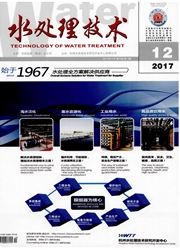

 中文摘要:
中文摘要:
土壤有机C是维持全球C平衡过程中的重要C库,其降解和转化在地球化学循环中占有重要地位。大型土壤动物对土壤有机C的稳定性起着重要的调控作用。^14C示踪技术由于在测定目标化合物的转化速率和定位代谢产物和残留物分布上的优势,近年来在土壤有机C稳定性研究中得到了广泛应用。本文综述了3种典型土食性大型土壤动物,白蚁(Isoptera:Termitidae)、甲虫幼虫(Coleoptera:Scarabaeidae)和蚯蚓(Oligocbaeta:Lumbricidae),对土壤稳态有机C降解转化的^14C示踪研究结果及相关的微生物作用。食土白蚁和甲虫幼虫的极端碱性(pH10~12.5)肠道段和肠道内的特殊蛋白酶的共同作用促使这两种动物可以选择性地降解和矿化腐殖酸中的稳态多肽等组分,进一步提高腐殖酸的腐殖化程度。食土蚯蚓体内含有高活性的纤维素酶,能促进纤维素的降解。虽然木质素在蚓粪中能发生降解,蚯蚓也能降解植物树叶,但是食土蚯蚓能否降解或选择性降解稳态土壤有机C的研究还极少。大型土壤动物肠道内含有大量微生物及酶,这些微生物在土壤动物降解和腐殖化有机C的过程中所起的具体作用如何以及这些酶的来源还不是很清楚。文中总结了目前对大型土壤动物转化土壤有机C认识上的不足,并对一些优先研究方向提出了建议。
 英文摘要:
英文摘要:
Soil organic carbon (SOC) is an important pool of global carbon, and SOC transformation Controls the global biogeochemical cycle of carbon. Soil macrofauna, due to their large biomass and abundant biodiversity, play an important role in regulating stability of SOC through their feeding activity in soil. Because of its facility in determination of transformation rate and localization of transformation products, ^14C isotope tracer technique has been proved to be an effective approach for studies on the stability of SOC. This review focused on the transformation of SOC by three typical soil-feeding macrofauna, termite (Isoptera: Termitidae), rose beetle larva (Coleoptera: Scarabaeidae) and earthworm (Oligochaeta: Lumbricidae), using ^14C isotope tracer technique. The microbial activities related to the transformation processes are also discussed. Soil-feeding termites and humus-feeding scarabaeid beetle larvae can selectively mineralize and degrade the peptidic component of humic acids in soil through combined functions of special proteolytic activities and extreme alkalinity (pH 10-12.5) of gut compartments in their intestinal tracts, and, as a result, enhance the humification of the humic acids. High cellulase activities present in the guts of geophagic earthworm make earthworms able to degrade cellulose. Lignin degradation occurs in worm cast and earthworms also feed on litter and leaves, however, little is known about whether earthworms can mineralize or selectively degrade the recalcitrant pool of SOC. Significantly high microbial and enzymatic activities are present in the guts of macrofauna, however, it is yet unclear to which extent the gut microorganisms contribute to the degradation and humification of SOC by the soil animals and from where the enzymes originate. Several gaps in knowledge about the impact of soil-feeding macrofauna on the biogeochemical processes of SOC have been identified and a number of research priorities have been suggested.
 同期刊论文项目
同期刊论文项目
 同项目期刊论文
同项目期刊论文
 Bioaccumulation and Bound-Residue Formation of a Branched 4-Nonylphenol Isomer in the Geophagous Ear
Bioaccumulation and Bound-Residue Formation of a Branched 4-Nonylphenol Isomer in the Geophagous Ear Biotic and abiotic degradation of four cephalosporin antibiotics in a lake surface water and sedimen
Biotic and abiotic degradation of four cephalosporin antibiotics in a lake surface water and sedimen 期刊信息
期刊信息
